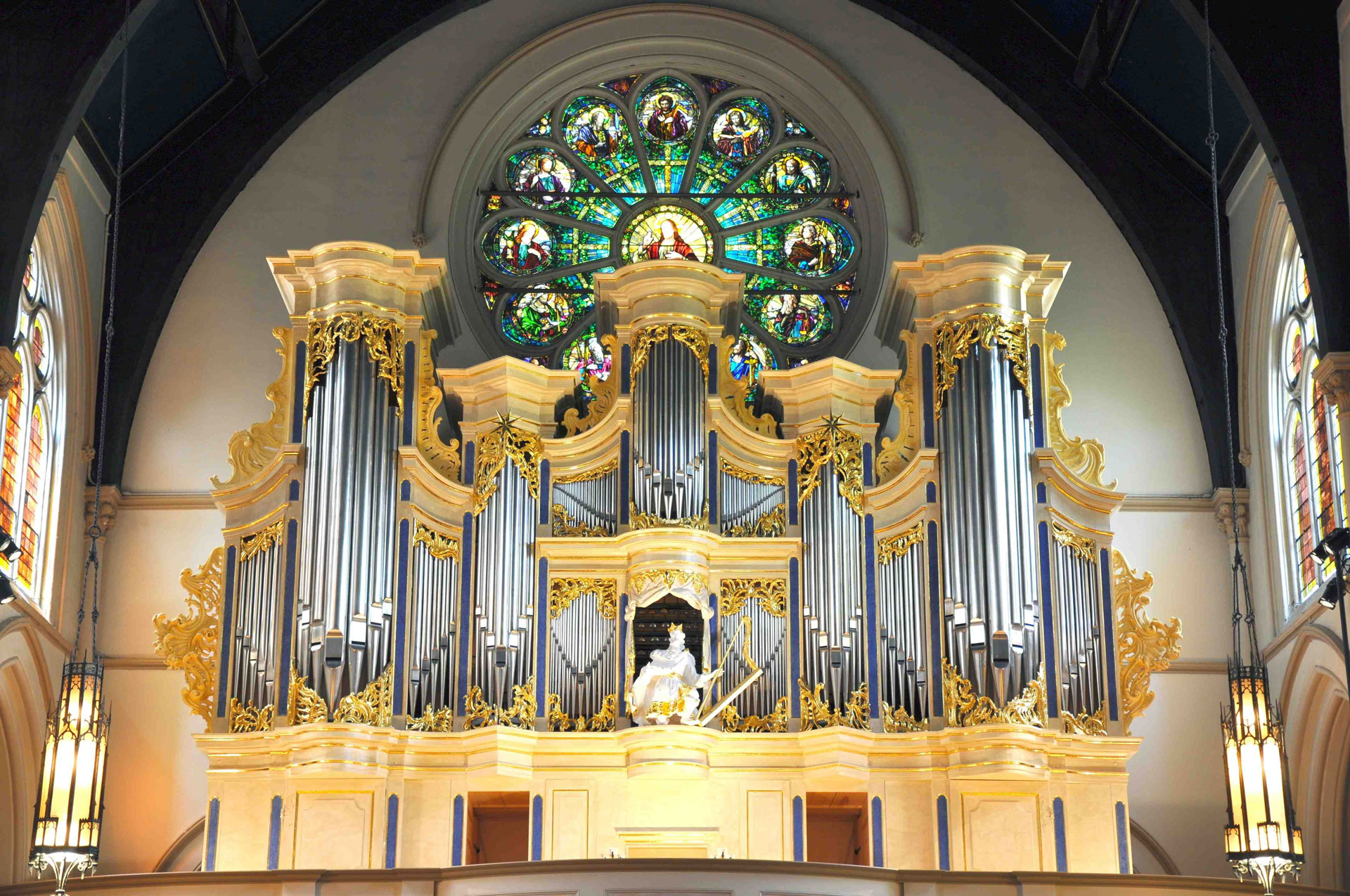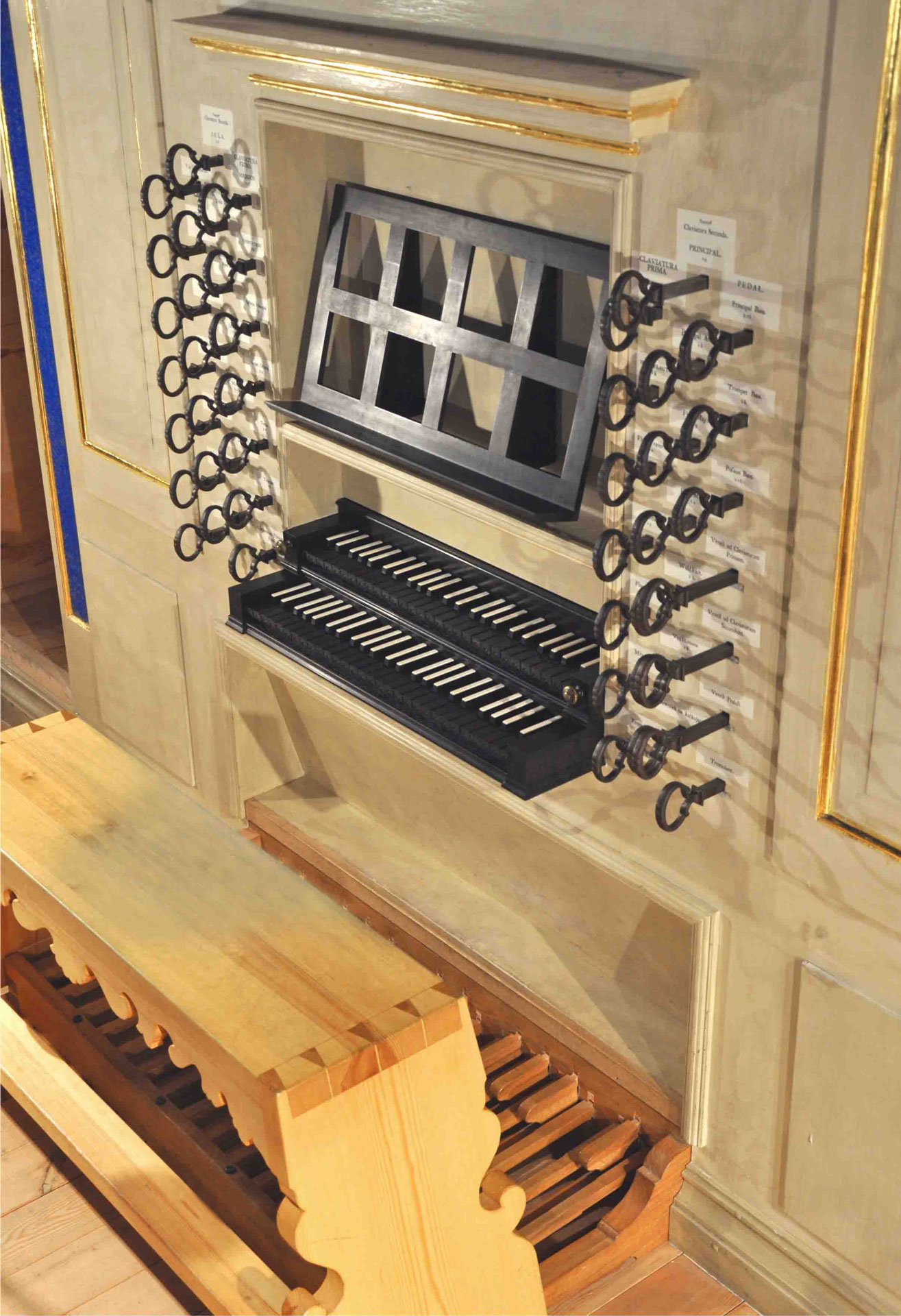"This project will provide both Eastman and the Rochester community with an organ suitable for the music of J.S. Bach, and help give life to the largest, best preserved late Baroque organ in Northern Europe.”
– Hans Davidsson, EROI project director, Eastman professor of organ 2001-2012

Photo by Stephen Kennedy

Photo by Stephen Kennedy
The New York Times spotlights the Craighead-Saunders Organ:
The organ, named after two legendary Eastman professors, David Craighead and Russell Saunders, was designed according to the specifications of an instrument built by Adam Gottlob Casparini in 1776 for the Church of the Dominicans in Vilnius, Lithuania. Casparini was an apprentice of Tobias Heinrich Gottfried Trost, for whose instruments J. S. Bach reserved his highest praise. The Casparini organ amply displays many of the qualities Bach himself desired in an organ: Gravität is provided by rich 16′ tone and a 32′ resultant in the pedal, and a manual mixture based on 16′ harmonics; great variety of tone is provided for by the wealth of color stops at both 8′ and 4′ pitch; and the “delicate sweetness” of tone so preferred by Bach is particularly apparent in stops such as the Flaut Travers, Principal Amalel, Iula and Unda Maris.
The original organ, fortunately well preserved in a region afflicted by years of war and conflict, is the only remaining example of a large organ built by Casparini and is considered to be one of the most valuable musical artifacts of its time in Europe today. An international reference group of organ builders was formed for this project including five of the foremost American builders working in this style: Steven Dieck, Paul Fritts, Bruce Fowkes, Martin Pasi, and George Taylor; the organ builders and instrument researchers at the Göteborg Organ Art Center in Sweden led by Mats Arvidsson, Joel Speerstra, and Munetaka Yokota; Eastman faculty including Hans Davidsson, David Higgs, Stephen Kennedy, William Porter, and Kerala J Snyder; and the consultant, Harald Vogel. The project represents a collaboration between the Eastman School of Music, the Episcopal Diocese of Rochester—the main partner and co-sponsor of the project—and the congregation of Christ Church, GOArt, and the Lithuanian Ministry of Culture.
Following some six years of research, studying and documenting the techniques and processes of eighteenth-century organ building, construction in Rochester began in late March 2007. At a ceremony, attended by David Craighead—who, with all present faculty and students, signed a wooden beam that would form part of the roof over a pedal tower—the first beams, made from reclaimed timber, were lifted into place to support the new rear balcony. The following eighteen months saw the installation of the instrument, and its voicing by Munetaka Yokota. During this time, a doctoral level seminar course was presented on “The Bach Organ” which included lectures and hands-on workshops on 18th century organ voicing led by Yokota. The instrument was dedicated at the EROI festival in October 2008.
The Craighead-Saunders Organ
CHRIST CHURCH (EPISCOPAL)
141 EAST AVENUE
ROCHESTER, NY
GOArt/Yokota – Gothenburg, Sweden, 2008
Modeled after the 1776 Adam Gottlob Casparini Organ
in Vilnius, Lithuania
CLAVIATURA PRIMA
BOURDUN. 16
PRINCIPAL. 8
HOHLFLAUT. 8
QVINTATHON. 8
Octava Principal. 4
Flaut Travers. 4
Qvinta. 3
Super Octava. 2
Flasch Flot. 2
Tertia. 1 3/5
Mixtura. 5 Choris
Trompet. 8
Claviatura Secunda
Principal Amalel. 8
I U L A. 8
Flaut Major. 8
Unda Maris. 8
PRINCIPAL. 4
Spiel Flet. 4
Flaut Minor. 4
Octava. 2
Wald Flot. 2
Mixtura. 4. Choris
Dulcian. 16
Vox Humana. 8
PEDAL
Principal Bass. 16
Violon Bass. 16
Full Bass. 12
Octava Bass. 8
Flaut & Quint Bass. 8
Super Octava Bass. 4
Posaun Bass. 16
Trompet Bass. 8
Capitalization following original stop labels.
Accessories
Ventil ad Claviaturam Primam
Ventil ad Claviaturam Secundum
Ventil Pedall
Two tremulants
BEBNY [drum stop]
Vox Campanarum [Glockenspiel]
Gwiazdy. [Cymbelstern]
Kalilujactgo. [bellows signal]
Manual Coupler (shove coupler)
Claviatura Prima to Pedal (drawstop)